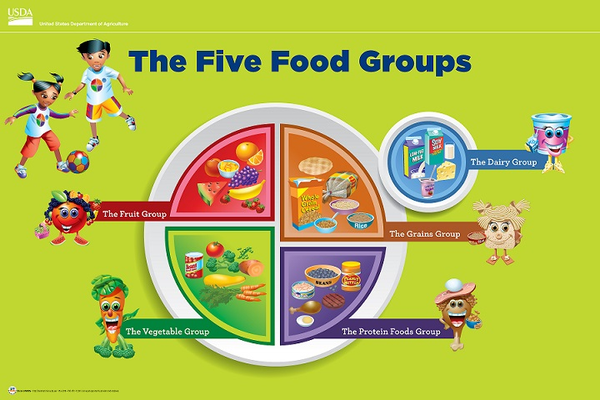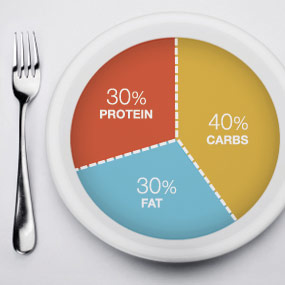Lesson 1. School and Community Gardens (Page 9)
- Students will maximize garden growth in a limited planning space
- Students will draw parallels between the basic needs of humans and those of plants
- Students can Identify the five food groups and give examples of foods in each groups, specifically fruits, vegetables, grains. (My Plate).

- Students will demonstrate understanding by listing the main micro/macro Nutrients associated with examples of fruits. vegetables, and grains.
- Students will compare and contrast the needs of gardens/plants to humans (food sources, energy, nutrients and minerals) .
- Students will create a healthy meal from the garden planned out.
- Students will be able to compare the main macro nutrients that humans require to that of the macronutrients required by plants.
- Students will be able to list one macro and micro nutrient found in the fruits/vegetables that student plan on growing in their garden and why they made their choices. Compare answers with another student.
Prep time: about 90 minutes
What you need:
- 2 eggs (Protein and Fat)
- 1¾ c. sifted flour (Grains)
- 2 tsp. baking powder
- ¼ tsp. baking soda
- ½ tsp. salt
- 1/3 c. vegetable oil (Fat)
- 2/3 c. sugar (Carbohydrates)
- 1 c. mashed bananas (about 3 bananas) (Fruit)
Equipment and supplies:
- oven (you’ll need help from your adult assistant)
- measuring cups and spoons
- mixer
- sifter
- spatula
- small bowl
- medium-size bowl
- large bowl
- bread pan coated with nonstick cooking spray
What to do:
- Preheat the oven to 350°F (180°C).
- Beat eggs well in a small bowl.
- In a medium-size bowl, sift together the flour, baking powder, baking soda, and salt.
- In a large bowl, add the vegetable oil. Add the sugar a little bit at a time, and continue beating until the mixture is fluffy.
- Add the eggs to the mixture in the large bowl and beat well.
- Add some of the flour mixture to the large bowl and beat well. Then add some of the mashed bananas and beat some more. Continue adding flour, then bananas, then flour, then bananas, until everything is mixed in.
- Pour mixture into the baking pan. Bake for 70 minutes.
- Flip your banana bread out of the pan, let it cool for a bit, and cut it into slices to eat and share!
How much does this recipe make?
16 slices
Nutritional analysis (per serving):
145 calories
2 g protein
5 g fat
24 g carbohydrate
1 g fiber
27 mg cholesterol
155 mg sodium
37 mg calcium
0.8 mg iron
Core Curriculum Standards
Reading Standards for Informational Text: (RI)
- 1.1- 6.1: Ask and answer questions about key details in a text.
- 1.2- 6.2: Identify the main topic and retell key details of a text.
- 1.3- 6.3: Describe the connection between two individuals, events, ideas, or pieces of information in a text.
- 1.7- 6.7: Use the illustrations and details in a text to describe its key ideas.
Reading Standards: Foundational Skills: (RF)
- 1.4- 6.4: Read with sufficient accuracy and fluency to support comprehension.
Writing Standards: (W)
- 1.2-6.2: Write informative/explanatory texts to examine a topic and convey ideas and information clearly.
Speaking and Listening Standards: (SL)
- 1.1- 6.1: Participate in collaborative conversations with diverse partners about topics and texts with peers and adults in small and larger groups.
- 1.4- 6.4: Report on a topic or text, or present an opinion.
Language Standards: (L) 1.1-6.1
- 1.1-6.1: Demonstrate command of the conventions of standard English grammar and usage when writing or speaking.
Next Generation Science Standards: (NGSS)
- 4-LS1-2: Use a model to describe that animals receive different types of information through their senses, process the information in their brain, and respond to the information in different ways.
- MS-LS1-5: Construct a scientific explanation based on evidence for how environmental and genetic factors influence the growth of organisms.
- 3-LS3-2: Use evidence to support the explanation that traits can be influenced by the environment.
- 2-PS1-1: Plan and conduct an investigation to describe and classify different kinds of materials by their observable properties.
- 5-PS1-3: Make observations and measurements to identify materials based on their properties.
- 5-PS3-1: Use models to describe that energy in animals’ food (used for body repair, growth, motion, and to maintain body warmth) was once energy from the sun.
NHES
- 1.2.1: Identify that healthy behaviors impact personal health.

